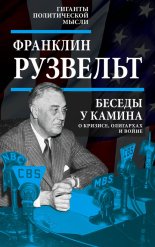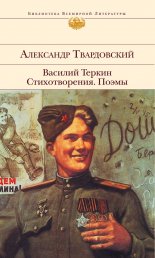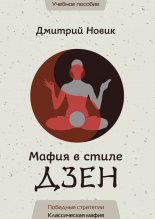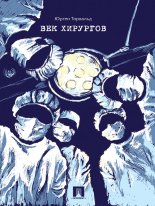└ŔÚ˝ŕŔÚ ýŔ˘ Ô ˝ţÔňýňÝÝţý ýŔň ěÝŔňŰŘýÓÝ ┬Ŕŕ˛ţ
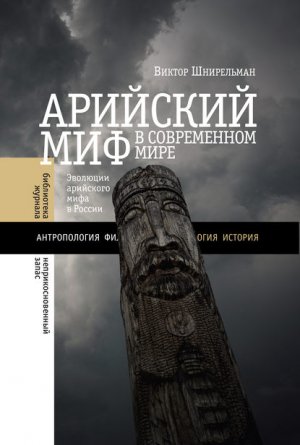
McCann, W. J. 1990. ôVolk undáGermanentumö: theápresentation ofátheápast ináNazi Germany // P. Gathercole, D. Lowenthal (eds.). Theápolitics ofátheápast, p.á74ľ88. London: Unwin Hyman.
Menzel, Birgit 2012. Occult andáesoteric movements ináRussia from theá1960s toátheá1980s // B. Menzel, M. Hagemeister, B. G. Rosenthal (eds.). TheáNew Age ofáRussia. Occult andáesoteric dimensions, p.á151ľ185. Berlin: Otto Sagner.
Misra, S. S. 1992. TheáAryan problem: aálinguistic approach. New Delhi: Munshiram.
Moscovici, Serge 1985. Theáage ofátheácrowd. Aáhistorical treatise onámass psychology. Cambridge: Cambridge University Press.
Mosse, George L. 1966. Theácrisis ofáGerman ideology. Intellectual origins ofátheáThird Reich. London: Weidenfeld andáNicolson.
Mosse, George L. 1970. Germans andáJews. Theáright, theáleft, andátheásearch foráaáôThird forceö inápre-Nazi Germany. NewáYork: Grosset andáDunlap.
Mulot, Siehe Sibylle 1990. Wodin, Tunis undáInka. DieáUra-Linda-Chronik // Karl Corino (hers.). Geflscht! Betrug ináPolitik, Literatur, Wissenschaft, Kunst undáMusik, S. 263ľ275. Frankfurt am Main: Eichborn Verlag.
Nandi, R. N. 2001. Aryans revisited. Delhi: Munshiram Manoharlal.
Nayak B. U., Gosh N. C. 1992. New trends ináIndian art andáarchaeology. New Delhi: Aditya Prakashan.
Noorani, A. G. 2002. Savarkar andáHindutva: theáGodse Connection. New Delhi: LeftWord Press.
Olender, Maurice 1992. Theálanguage ofáParadise: race, religion, andáphilology inátheáNineteenth Century. Cambridge, Mass.: Harvard University Press.
Ortiz deáMontellano, B. 1995. Multiculturalism, cult archaeology, andápseudoscience // F. B. Harrold & R. A. Eve (eds.). Cult archaeology andácreationism, p.á134ľ151. Iowa City: University ofáIowa Press.
Pandey, G. 1993. Which ofáus are Hindu // G. Pandey (ed.). Hindus andáothersáľ theáquestion ofáidentity ináIndia today. New Delhi: Viking.
Panikkar, K. N. 2004. Inátheáname ofánationalism // Front Line, 16áMarch (http://www.countercurrents.org/comm-panikker160304.htm).
Phelps, Reginald H. 1963. ôBefore Hitler cameö: Thule society andáGermanen Orden // Journal ofáModern History, vol.á35, no. 3: 245ľ261.
Poewe, Karla O. 2006. New religions andátheáNazis. N. Y.: Routledge.
Poliakov, Leon 1974. TheáAryan Myth. London: Basic Books.
Poliakov, Leon 1985. TheáHistory ofáanti-Semitism. Vol.á4. Suicidal Europe, 1870ľ1933. Oxford: Oxford University Press.
Pollock, Sheldon 1993. Deep Orientalism? Notes onáSanskrit andápower beyond theáRaj // C. A. Breckenridge, P.áVan deráVeer (eds.). Orientalism andátheápostcolonial predicament: perspectives onáSouth Asia, p.á76áľ 133. Philadelphia: University ofáPennslvania Press.
Popov, Igor 2001. TheáNew Barbarians // Fortean Times, August.
Quinn, Malcolm 1994. Theáswastika. Constructing theásymbol. London andáNewáYork: Routledge.
Rahman, T.á1996. Languages ofátheáProto-Historic Indus Valley // TheáMankind Quarterly, vol.á36, no. 3ľ4: 221ľ246.
Rajaram, N. S. 1993. Aryan invasion ofáIndia: theámyth andátruth. New Delhi: Voice ofáIndia.
Rajaram N. S., Frawley D. 1994. Vedic Aryans andátheáorigins ofácivilization: aáliterary andáscientific perspective. Ottawa andáNew Delhi: World Heritage Press.
Ram, Hoggay 2000. Theáimmemorial Iranian nation? School textbooks andáhistorical memory inápost-revolutionary Iran // Nations andánationalism, vol.á6, no. 1: 67ľ90.
Ramaswami, S. 2001. Remains ofátheárace: archaeology, nationalism andátheáyearning forácivilization inátheáIndus valley // Indian economic andásocial history review, vol.á38, no. 2: 105ľ145.
Rao, Nandini 1994. Interpreting silences: symbol andáhistory inátheácase ofáRam Janmabhoomi / Babri Masjid // G. C. Bond andáA. Gilliam (eds.). Theásocial construction ofátheápast: representation asápower, p.á154ľ164. London: Routledge.
Rao, S. R. 1973. TheáIndus scriptáľ methodology andálanguage // D. P. Agraval, A. Ghosh (eds.). Radiocarbon andáIndian archaeology, p.á323ľ340. Bombay: Tata Institute ofáFundamental Research.
Rao, S. R. 1979. Deciphering theáIndian script // Indian andáForeign Review, vol.á17, no. 3: 13ľ18.
Rao, S. R. 1984. New light onáIndus script andálanguage // B. B. Lal, S. P. Gupta (eds.). Frontiers ofátheáIndus civilization, p.á193ľ199. New Delhi.
Ratnagar, Sh. 2004. Archaeology atátheáheart ofáaápolitical confrontation: theácase ofáAyodhya // Current Anthropology, vol.á45, no. 2: 239ľ249.
Ratnagar, Sh. 2007. TheáAryan homeland debate ináIndia // Ph. L. Kohl, M. Kozelsky, andáN. Ben-Yehuda (eds.). Selective remembrance: archaeology inátheáconstruction, commemoration, andáconsecration ofánational pasts, p.á349ľ378. Chicago: Chicago University Press.
Renatus, Q. F. 1922. Svastika // Narodni Politika, r. 40, no.á337.
Reznik, Semen 1996. TheáNazification ofáRussia: anti-Semitism inátheápost-Soviet era. Washington, D. C.: Challenge Publications.
Riasanovsky, N. V. 1952. Russia andátheáWest inátheáteaching ofátheáSlavophiles. Cambridge, Mass.: Harvard University Press.
Ringel, F. 1994. New England Neo-Pagans: medievalism, fantasy, religion // Journal ofáAmerican culture, vol.á17, no. 3: 65ľ68.
Rollin, Henri 1939. LĺApocalypse deánotre temps. Paris: Gallimard.
Rome Spechler, Dina 1990. Russian nationalism andáSoviet politics // Lubomir Hajda, Mark Beissiger (eds.). Theánationalities factor ináSoviet politics andásociety, p.á281ľ304. Boulder: Westview.
Rose, P.áL. 1992. Wagner: race andárevolution. New Haven: Yale Univ. Press.
Rosenberg, Alfred 1930. DeráMythus desá20 Jahrhunderts. Mnchen: Hoheneichen Verlag.
Rosenthal, Bernice G. 1997. Political implications ofátheáearly twentieth-century occult revival // B. G. Rosenthal (ed.). TheáOccult ináRussian andáSoviet culture, p.á379ľ418. Ithaca andáLondon: Cornell Univ. Press.
Saint-Yves dĺAlveydre, Alexandre 1884. Mission desáJuifs. Paris: Calmann Lvy.
Sarda, H. B. 1975. Hindu superiorityáľ anáattempt toádetermine theáposition ofátheáHindu race inátheáscale ofánations. New Delhi.
Savarkar, V. D. 1969. Hindutva: who isáHindu? Bombay: S. S. Savarkar.
Schnapp, Alain 1977. Archologie et nazisme // Quaderni di Storia, vol.á3, no. 5: 1 ľá26.
See, Klaus voná2006. Ideologie undáPhilologie. Aufstze zuráKultureľ undáWissenschaftsgeschuchte. Heidelberg: Universittsverlag Winter.
Sertima, Ian van. 1985. Editorial // Journal ofáAfrican Civilizations, April, vol.á7, no. 1: 7 ľá12.
Sethna, K. D. 1992. Theáproblem ofáAryan origins: from anáIndian point ofáview. New Delhi: Aditya Prakashan.
Sharma, R. S. 1978. Inádefense ofáôAncient Indiaö. New Delhi: Peopleĺs Publishing House.
Sharma, R. S. 1993. TheáAryan problem andátheáhorse // Social Scientist, vol.á21, no. 7ľ8: 3 ľá16.
Sharma, A. 1995. TheáAryan question: some general considerations // G. Erdosy (ed.). TheáIndo-Aryans ofáAncient South Asia: language, material culture andáethnicity, p.á177ľ191. Berlin: Walter deáGruyter.
Sharma, D. 2000. Science, culture andáconflict ináIndia // Cultural Dinamics, vol.á12, no. 2: 164ľ181.
Shavit, Yacov 2001. History ináblack. African-Americans inásearch ofáanáancient past. London: Frank Cass.
Sheehan, Th. 1981. Myth andáviolence: theáFascism ofáJulius Evola andáAlain deáBenoist // Social Research, vol.á48, no. 1: 45ľ73.
Shenfield, Stephen D. 2001. Russian fascism: traditions, tendencies, movements. Armonk, NewáYork: M. E. Sharp.
Shnirelman, V. A. 1995. From internationalism toánationalism: forgotten pages ofáSoviet archaeology inátheá1930s andá1940s // Ph. Kohl & C. Fawcett (eds.). Nationalism, politics andátheápractice ofáarchaeology, pp. 120ľ138. Cambridge: Cambridge University Press.
Shnirelman, V. A. 1996a. Who gets theápast? Competition foráancestors among non-Russian intellectuals ináRussia. Washington, D. C. andáBaltimore: Woodrow Wison Center Press, Johns Hopkins University Press.
Shnirelman, V. A. 1996b. Theáfaces ofánationalist archaeology ináRussia // M. Diaz-Andreu & T.áC. Champion (eds.). Nationalism andáarchaeology ináEurope, p.á218ľ242. London: UCL Press.
Shnirelman, V. A. 1998a. Russian Neo-pagan Myths andáAntisemitism. Jerusalem: TheáHebrew University.
Shnirelman, V. A. 1998b. Archaeology andáethnic politics: theádiscovery ofáArkaim // Museum International, no. 198 (vol.á50, no. 2): 33ľ39.
Shnirelman, V. A. 1999. Passions about Arkaim: Russian Nationalism, theáAryans, andátheáPolitics ofáArchaeology // Inner Asia, vol.á1, no. 2: 267ľ282.
Shnirelman, Victor A., 2002. TheáMyth ofátheáKhazars andáIntellectual Antisemitism ináRussia, 1970sáľ 1990s. Jerusalem: Vidal Sassoon International Center forátheáStudy ofáAntisemitism, TheáHebrew University ofáJerusalem.
Silberman, N. A. 1989. Between past andápresent. Archaeology, ideology, andánationalism inátheámodern Middle East. N. Y.: Anchor Books.
Skurlatov, V. 1982. AáCode ofáMorals // S. F. Cohen (ed.). Anáend ofásilence. Uncensored opinion inátheáSoviet Union, p.á171ľ174. N. Y.: W. W. Norton.
Slapak, B. 1993. Archaeology andátheácontemporary myths ofátheápast // Journal ofáEuropean Archaeology, vol.á1, no. 2: 191ľ195.
Slezkine, Yuri 1994. Arctic mirrors. Russia andátheásmall peoples ofátheáNorth. Ithaca andáLondon: Cornell Univ. Press.
Smith, Anthony D. 1984. National identity andámyths ofáethnic descent // Research inásocial movements, conflict andáchange, v. 7: 95 ľá130.
Solomos, J. andáBack L. 1996. Racism andásociety. London: MacMillan Press.
Spear, P.á1961. India. Aámodern history. Ann Arbor: TheáUniversity ofáMichigan Press.
Spielvogel, J. andáRedles D. 1986. Hitlerĺs racial ideology: content andáoccult sources // Simon Wiesenthal Center Annual, vol.á3: 227ľ246.
Sternhell, Z. 1976. Fascist ideology // W. Laqueur (ed.). Fascism. Aáreaderĺs guide, p.á315ľ376. Cambridge: Cambridge University Press.
Stites, Richard 1992. Russian popular culture: entertainment andásociety since 1900. Cambridge: Cambridge University Press.
Stodolsky, Igor 2007. Cultural geopolitics inátheáNew Russian Intelligentsia. Aácase study ofáTimur Novikov, artist andácultural ideologist, 1958ľ2002 // M. Henriksson, S. Bovnik (eds.). Contemporary art andánationalism, p.á126ľ153. Prishtine: Prishtine Institute forácontemporary art ôEXITö.
Subtelny, Maria Eva 1994. Theásymbiosis ofáTurk andáTajik // Beatrice F. Manz (ed.). Central Asia ináhistorical perspective, p.á45ľ61. Boulder: Westview.
Swarup, D. 1994. Editorial // Manthan, vol.á15, no. 2ľ3: 3ľ6.
Szporluk, Roman 1989. Dilemmas ofáRussian nationalism // Problems ofácommunism, July-August, p.á15ľ35.
Talageri Shrikant G. 1993. TheáAryan invasion theory. Aáreappraisal. New Delhi: Aditya Prakashan.
Talageri, Shrikant G. 1994. Invasion theory andáIndian nationalism // Manthan, vol.á15, no. 2ľ3: 119ľ125.
Thapar, Romila 1989. Imagined religious communities? Ancient history andátheámodern search foráaáHindu identity // Modern Asian Studies, vol.á23, no. 2: 209ľ231.
Thapar, Romila 1989ľ1991. Archaeology andálanguage atátheároots ofáAncient India // Journal ofátheáAsiatic Society ofáBombay, vol.á64ľ66. P.á249ľ268.
Thapar, Romila 1996. Theátheory ofáAryan race andáIndia: history andápolitics // Social Scientist, vol.á24, no. 272ľ274: 3 ľá29.
Thapar, Romila 2000a. Interpreting early India // Thapar, Romila. History andábeyond. New Delhi: Oxford Uiversity Press.
Thapar, Romila 2000b. Time asáaámetaphor ofáhistory // Thapar, Romila. History andábeyond. New Delhi: Oxford Uiversity Press.
Thapar, Romila 2000c. Onáhistorical scholarship andátheáuses ofátheápast // Ethnic andáracial studies, vol.á23, no. 3: 594ľ616.
Thapar, Romila 2000d. Hindutva andáhistory. Why do Hindutva ideologues keep flogging dead horse // Frontline, October 2000: 15ľ16.
Trautmann, Thomas R. 1997. Aryans andátheáBritish India. Berkeley: Univ. ofáCalifornia Press.
Verma, K. C. 1984. TheáAryans, theáVeda andátheáKaliyuga era ofá3100 B. C. Varanasi: Dept. ofáAncient Indian History, Culture andáArchaeology.
Viereck, Peter 1965. Metapolitics. Theároots ofátheáNazi mind. N. Y.: Capricorn Books.
Walicki, A. 1975. TheáSlavophile controversy. Oxford: Clarendon Press.
Weissmann, Karlheinz 1991a. Druiden, Goden, Weise Frauen. Freiburg: Herder.
Weissmann, Karlheinz 1991b. Schwarze Fahnen, Runenzeichen. DieáEntwicklung derápolitischen Symbolik derádeutschen Rechten zwischen 1890 undá1945. Dusseldorf: Droste.
Who isů 1984. Who isáspiritual teacher Lev Sylenko. Spring Glen, N. Y.: TheáUkrainian Native Faith.
Wilson, Andrew 2002. Elements ofáaátheory ofáUkrainian ethno-national identities // Nations andánationalism, vol.á8, no. 1: 31ľ54.
Wilson, Stephen 1982. Ideology andáexperience: antisemitism ináFrance atátheátime ofátheáDreyfus affair. Rutherford, N. J.: Fairleigh Dickinson University Press.
Winn, Sh. M. M. 1982. Pre-writing ináSoutheastern Europe: theásign system ofátheáVinca culture ca. 4000 B. C. Calgary, Alta.: Western Publishers.
Williams, Stephen 1991. Fantastic archaeology. Theáwild side ofáNorth American prehistory. Philadelphia: University ofáPennsylvania Press.
Wistrich, Robert S. 1991. Antisemitism. Theálongest hatred. London: Themes Methuen.
Witzel M., Farmer S. 2000. Horseplay ináHarappa. TheáIndus Valley Decipherment Hoax // Frontline, September 30áľ Octoberá13.
Wiwjorra, Ingo 1996. German archaeology andáits relation toánationalism andáracism // Margarita Diaz-Andreu, Timothy Champion (eds.). Nationalism andáarchaeology ináEurope, p.á164ľ188. London: UCL Press.
Wolpert, S. A. 1962. Tilak andáGokhale: revolution andáreform inátheámaking ofámodern India. Berkeley: Univ. ofáCalifornia Press.
Yanov, A. 1987. TheáRussian challenge andátheáyear 2000. Oxford: Basil Blackwell.
